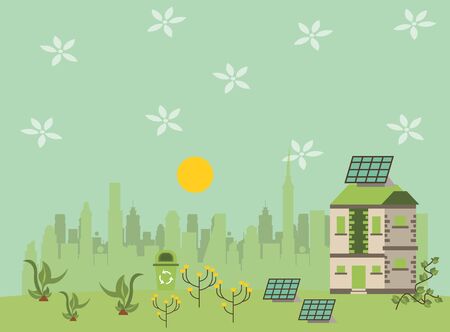1. Understanding the Basics: IPM, Climate, and Weather
When planning a successful garden in the United States, it’s important to understand how Integrated Pest Management (IPM), climate, and weather all work together. These core concepts lay the foundation for making smart decisions that keep your garden healthy and thriving.
What Is Integrated Pest Management (IPM)?
Integrated Pest Management, or IPM, is a practical approach to controlling pests in gardens and landscapes. Instead of relying only on chemical pesticides, IPM combines different strategies to manage pests in ways that are safe for people, pets, and the environment. The main goal is to use the least harmful methods first and only use stronger controls when absolutely necessary.
Key Elements of IPM
| Element | Description | Example in American Gardens |
|---|---|---|
| Prevention | Stop pest problems before they start | Choosing disease-resistant tomato varieties |
| Monitoring | Regularly check for pests or signs of damage | Inspecting leaves for aphids every week |
| Identification | Know which pests are present and if they are harmful | Recognizing ladybugs vs. harmful beetles |
| Control Methods | Use physical, cultural, biological, or chemical controls as needed | Hand-picking caterpillars or using insecticidal soap if needed |
The Difference Between Climate and Weather
Understanding climate and weather is essential for gardeners across America because these factors influence everything from planting dates to pest outbreaks.
Climate vs. Weather Explained
| Climate | Weather | |
|---|---|---|
| Definition | The average conditions in a region over many years (usually decades) | The day-to-day changes in temperature, precipitation, wind, etc. |
| Example in Gardening | The USDA Hardiness Zone Map helps gardeners know which plants will survive winter temperatures in their area. | A sudden cold snap can damage young seedlings planted too early in spring. |
Why Are Climate and Weather Important for American Gardeners?
Pest populations thrive or decline based on the local climate and recent weather patterns. For example, a wet spring may lead to more slugs, while a hot summer could bring an outbreak of spider mites. By understanding both long-term climate trends and short-term weather events, gardeners can make better IPM decisions—choosing the right plants, preparing for likely pests, and picking the safest control methods for their region.
2. Regional Climate Differences Across the United States
Understanding Americas Diverse Garden Climates
The United States is a big country with lots of different climates, and this affects how gardeners deal with pests and diseases. Whether you live in the cool, damp Pacific Northwest, the humid Midwest, or the dry, hot Southwest, your approach to Integrated Pest Management (IPM) will look different. Let’s take a closer look at how these regions shape pest problems and gardening strategies.
Major Regional Climate Zones and Their Impact on IPM
| Region | Climate Features | Common Pests & Problems | IPM Strategies |
|---|---|---|---|
| Pacific Northwest | Mild, wet winters; cool, damp summers | Slugs, snails, fungal diseases | Use barriers for slugs, promote air circulation, select disease-resistant plants |
| Midwest | Cold winters; hot, humid summers; frequent storms | Japanese beetles, powdery mildew, aphids | Rotate crops, encourage beneficial insects, use mulch to control moisture |
| Southwest | Hot, dry summers; mild winters; low humidity | Aphids, spider mites, drought stress | Xeriscaping, drip irrigation, choose heat-tolerant varieties |
Pest Populations Respond to Local Weather Patterns
Pests thrive when local weather matches their favorite conditions. For example, slugs love the constant drizzle of Seattle but struggle in dry Arizona gardens. In the Midwest, sudden rainstorms can cause fungal outbreaks that aren’t a problem in California’s Central Valley. Understanding your region’s climate helps you anticipate which pests might show up and plan accordingly.
Adapting Your IPM Approach by Region
Gardeners across America need to tailor their IPM plans to their local climate. This might mean checking for powdery mildew after summer storms in Ohio or looking out for spider mites during long dry spells in New Mexico. By paying attention to both regional climate and daily weather patterns, you can make smarter decisions about planting times, watering schedules, and pest control methods.

3. Seasonal Weather Patterns and Their Impact on Garden Pests
Seasonal weather changes play a huge role in how pests behave and thrive in American gardens. Each season brings its own set of challenges, and understanding these patterns can help gardeners make better Integrated Pest Management (IPM) decisions. Let’s take a closer look at how the shifting seasons, unpredictable weather events, and temperature extremes affect garden pests across the United States.
How Seasons Affect Pest Activity
Pests respond directly to the changing seasons. Some become more active in warm weather, while others hide out during cold months. Heres a simple breakdown:
| Season | Common Pests | Pest Activity Level | IPM Tips |
|---|---|---|---|
| Spring | Aphids, slugs, snails, caterpillars | High – emergence and breeding | Monitor new growth, use barriers, hand-pick pests early |
| Summer | Spider mites, whiteflies, Japanese beetles | Very high – rapid reproduction | Increase scouting, encourage beneficial insects, water wisely |
| Fall | Stink bugs, rodents, squash bugs | Moderate – seeking shelter/food before winter | Clean up debris, seal entry points, harvest promptly |
| Winter | Mice, voles (in some regions) | Low for most insects; higher for rodents in mild climates | Protect bulbs/roots, reduce habitat for overwintering pests |
The Effects of Unpredictable Weather Events
Sudden storms, heatwaves, droughts, or unexpected frosts can throw pest cycles off balance. For example:
- Heavy rains: Can wash away some pests but also create perfect breeding spots for mosquitoes and snails.
- Droughts: Stress plants and make them more vulnerable to spider mites and grasshoppers.
- Late frosts: May kill off some pests but also damage plants already weakened by pest feeding.
- Heatwaves: Accelerate life cycles of many insects like aphids and whiteflies.
Pest Response to Extreme Temperature Swings
Pests are quick to adjust when temperatures swing wildly from hot to cold or vice versa. This can mean earlier arrivals of certain bugs in spring or longer infestations into fall. Some pests even develop resistance to cold snaps by hiding deeper underground or inside garden debris.
Why This Matters for American Gardeners
No matter where you live in the U.S.—from Florida’s humid summers to Colorado’s sudden snowstorms—seasonal shifts and unpredictable weather shape which pests show up in your garden and when. By keeping an eye on local forecasts and knowing typical seasonal pest patterns, you’ll be better prepared to act early with smart IPM strategies that fit your climate and community.
4. Adapting IPM Strategies to Local Weather Conditions
Understanding the Impact of Weather on Your Garden
Weather can change quickly in the U.S., and these changes play a big role in how pests and diseases affect your garden. Integrated Pest Management (IPM) works best when you adjust your approach based on what’s happening outside right now. Let’s look at some practical tips for handling common weather events in American gardens.
Adjusting IPM Decisions Based on Real-Time Weather Events
| Weather Event | Potential Pest & Disease Issues | IPM Tips |
|---|---|---|
| Heavy Rain | – Fungal diseases like powdery mildew – Slugs and snails thrive – Soil erosion exposes roots |
– Space plants for good air flow – Remove standing water quickly – Use mulch to prevent splash-up and erosion – Set slug traps or barriers after rain |
| Drought | – Spider mites and aphids increase – Stressed plants more vulnerable – Some weeds outcompete crops |
– Water early in the day to reduce evaporation – Mulch to conserve moisture – Inspect for pests hiding under leaves – Hand-pull drought-tolerant weeds promptly |
| Unseasonal Cold | – Slow plant growth, but some pests may survive longer – Frost damage weakens plants – Delayed flowering attracts late-season pests |
– Cover sensitive plants with frost cloths or old sheets – Delay planting tender crops until temperatures stabilize – Monitor for pest outbreaks as weather warms again |
| Unusual Warmth | – Early emergence of insects like beetles or caterpillars – Faster spread of fungal diseases – Weeds sprout earlier than expected |
– Scout for pests earlier in the season – Adjust planting dates if possible – Remove weeds before they set seed – Apply preventive fungicides if needed (choose organic options when possible) |
Practical Tips for Real-Time Adaptation
- Keep a Garden Journal: Note daily weather patterns and pest sightings. This helps you spot trends year-to-year.
- Use Local Resources: Check your local Cooperative Extension office or state university for region-specific pest alerts and advice.
- Choose Resilient Plants: Select varieties known to handle your area’s typical weather ups and downs.
- Stay Flexible: Be ready to change watering, mulching, or even replanting schedules as weather changes throughout the season.
- Monitor Regularly: Walk your garden at least twice a week, looking under leaves, along stems, and in the soil for any new problems after major weather events.
Weather-Ready Garden Checklist
- Have row covers, mulch, and organic sprays ready before you need them.
- Test soil drainage before planting each spring.
- Create windbreaks or shade as needed using temporary structures.
- Sign up for local weather alerts to get ahead of sudden changes.
This adaptive approach keeps your IPM plan effective no matter what Mother Nature throws at your American garden!
5. Leveraging Weather Data and Local Resources
Why Weather Data Matters for Gardeners
Understanding how weather patterns affect your garden is a game changer for successful Integrated Pest Management (IPM). In America, unpredictable weather—from sudden downpours to dry heat waves—can influence pest populations and plant health. By staying informed with local weather data, gardeners can take proactive steps to protect their plants and reduce the need for chemical treatments.
Using Weather Forecasts in IPM Decisions
Weather forecasts help you time your gardening activities, such as watering, applying pesticides, or planting new crops. For example, spraying pesticides right before a rainstorm might wash them away, making your efforts less effective and increasing runoff into the environment. Conversely, certain pests thrive in warm, humid conditions—knowing this can help you monitor problem areas more closely during those times.
How to Use Weather Information
| Weather Condition | Recommended IPM Action |
|---|---|
| Heavy Rainfall | Delay pesticide application; check for fungal diseases after storms |
| Drought/High Heat | Water early in the morning; watch for spider mites and stressed plants |
| Cool Temperatures | Monitor for slugs/snails; avoid overwatering |
| Windy Days | Avoid spraying chemicals; use barriers or row covers if possible |
Tapping Into Extension Services and Local Resources
The United States has a strong network of Cooperative Extension Services—often connected to universities—that offer free or low-cost advice tailored to your region. These experts provide up-to-date information on pests, diseases, and climate trends affecting local gardens. Many extension offices also hold workshops or offer diagnostic services if you’re facing unusual problems in your garden.
Popular Resources for American Gardeners
- Local Extension Offices: Get region-specific guidance on pest issues and weather impacts.
- Master Gardener Programs: Connect with trained volunteers for practical gardening tips.
- Online Pest Alerts: Stay updated on outbreaks reported in your area.
- Mobile Apps: Use technology like weather apps or gardening apps to receive real-time alerts and reminders tailored to your zip code.
The Role of Technology in Smart Gardening
Today’s gardeners have access to a wealth of tech tools that make IPM decisions easier. Weather stations can track temperature, rainfall, and humidity right in your backyard. Smartphone apps send alerts about upcoming frosts or pest outbreaks. These tools allow you to act fast and tailor your approach based on current conditions—keeping your garden healthy while reducing unnecessary pesticide use.


